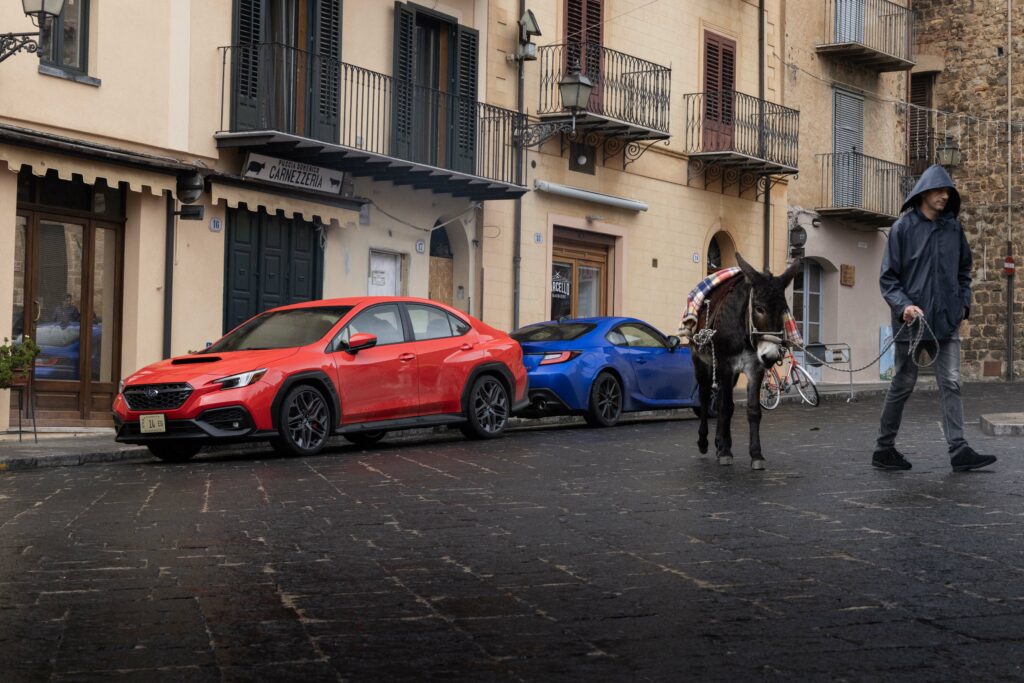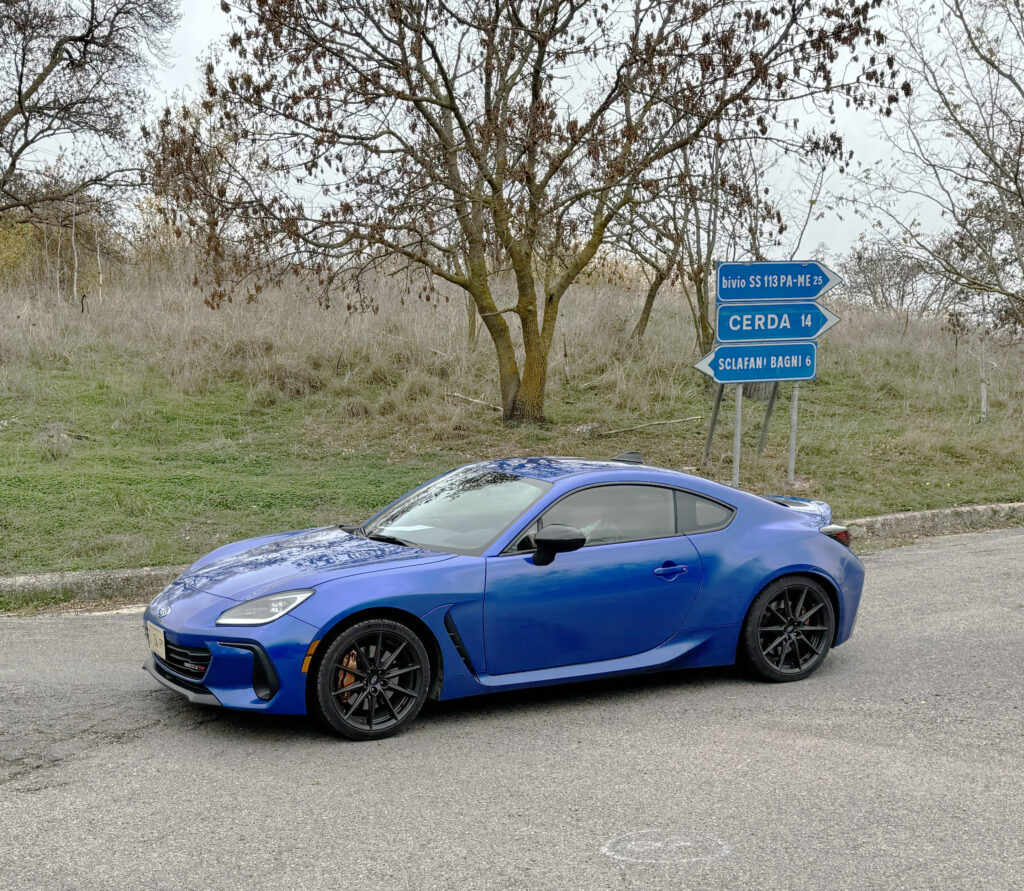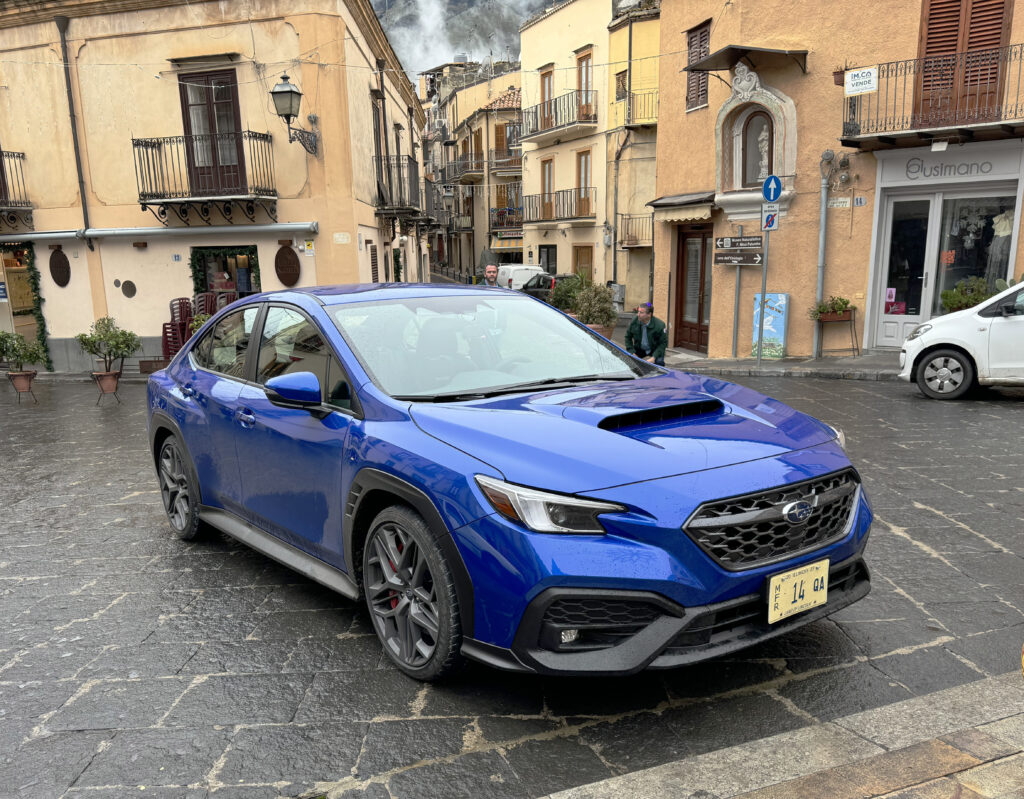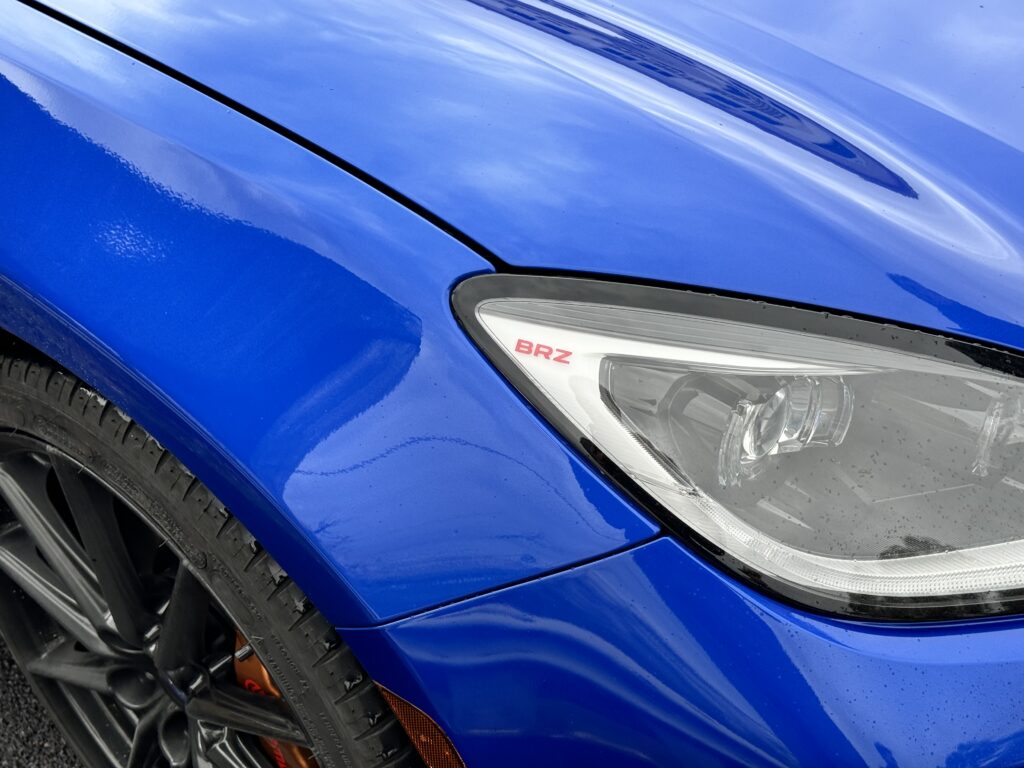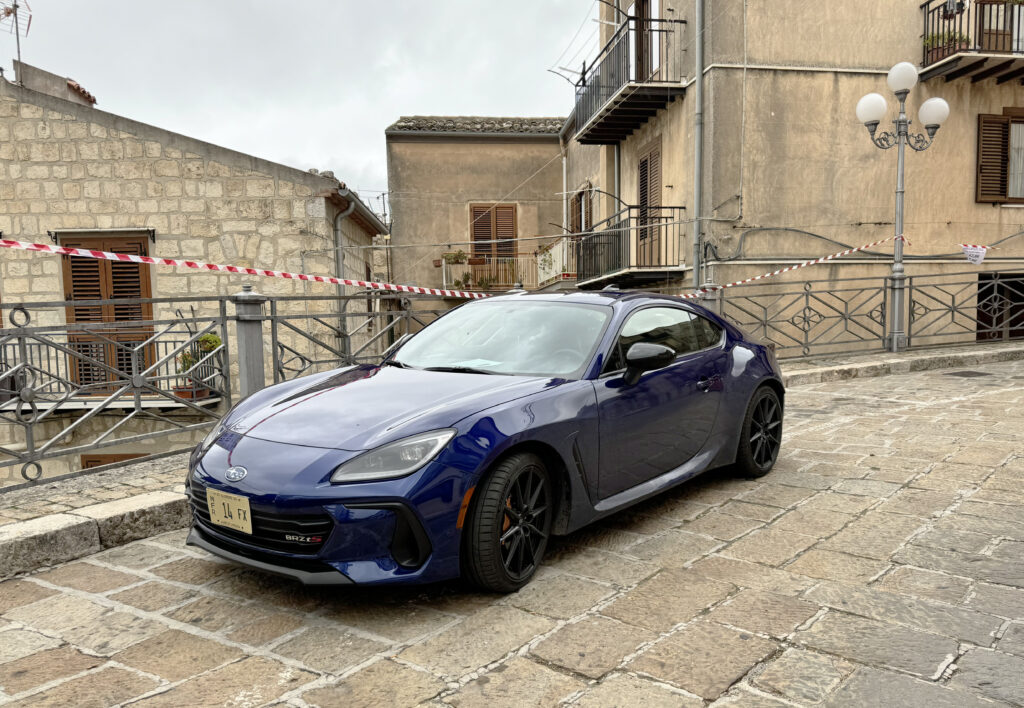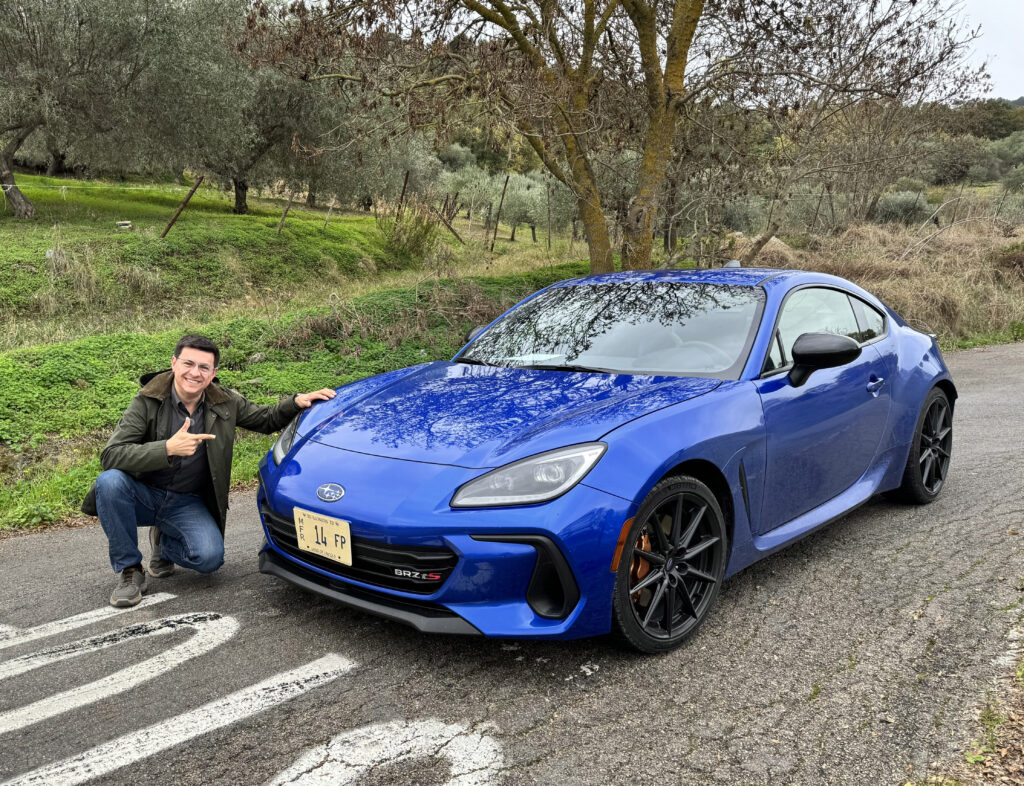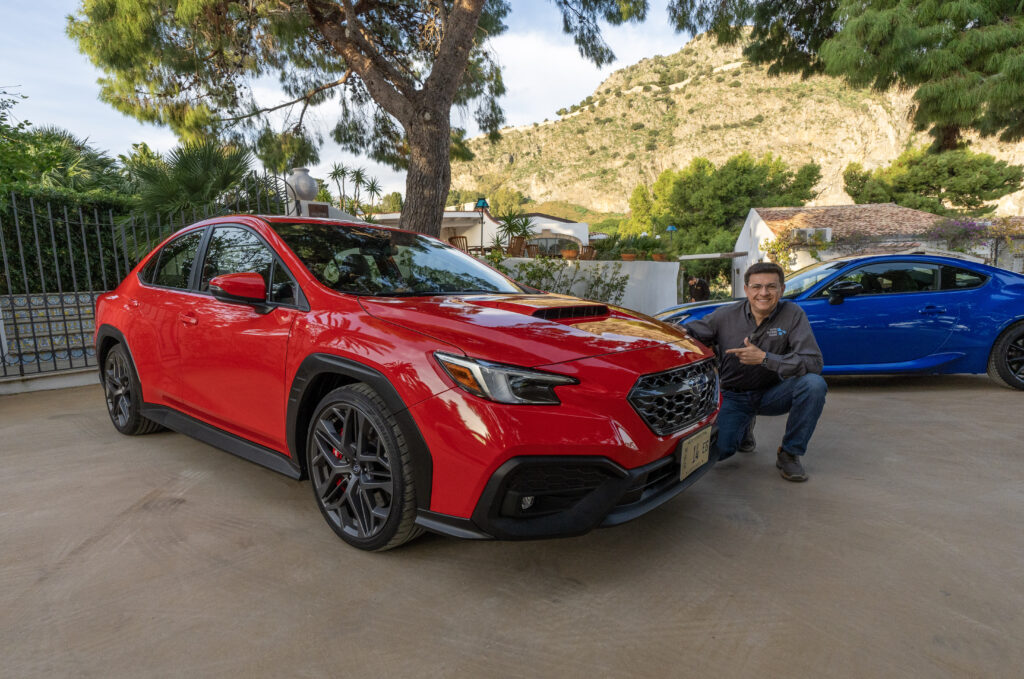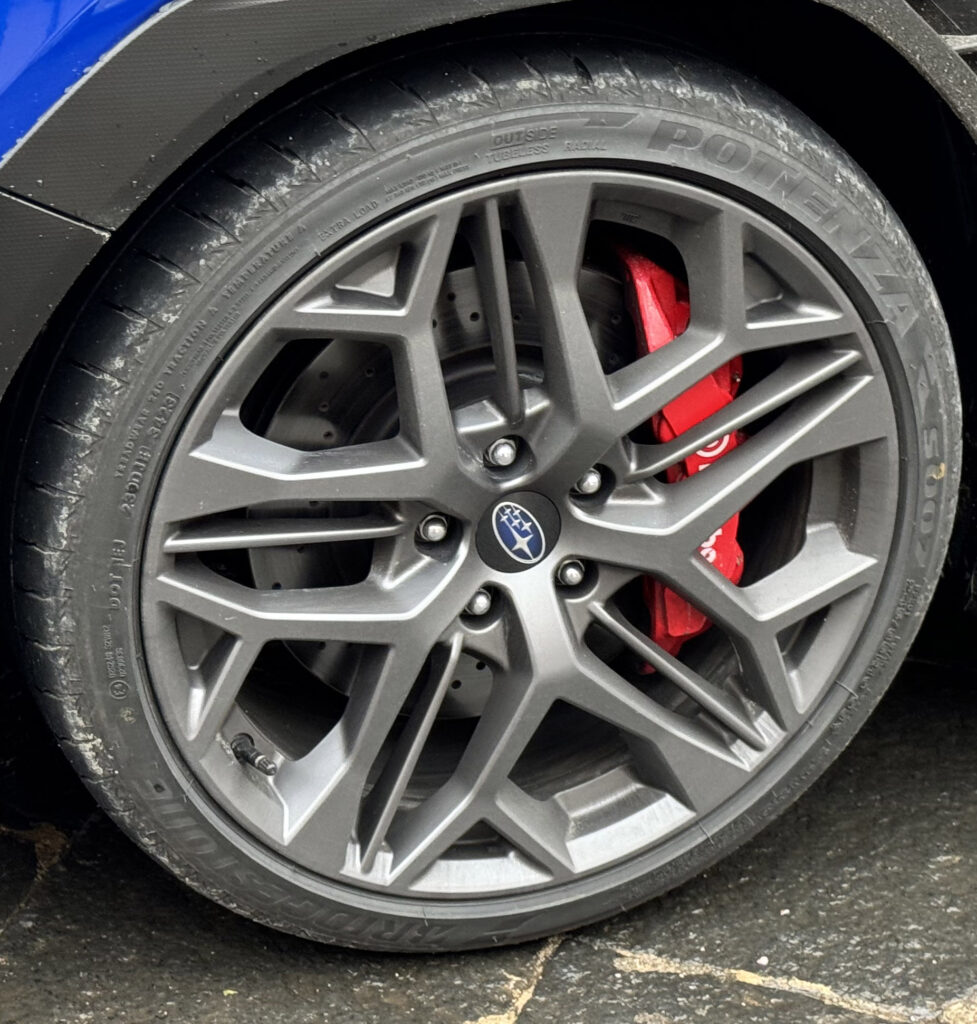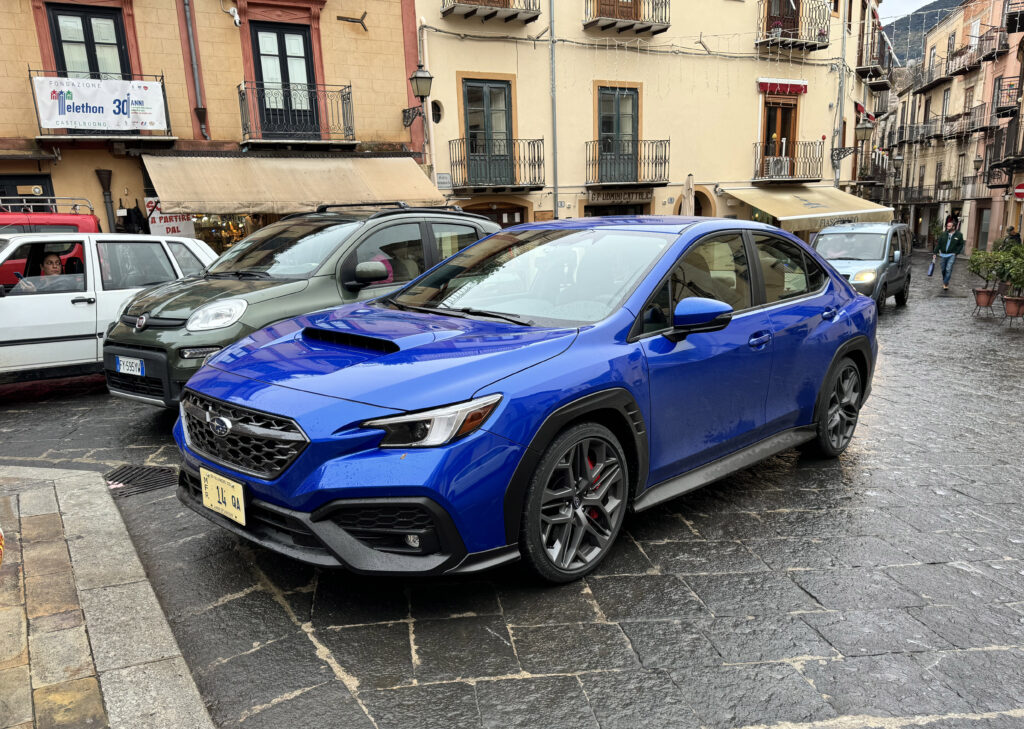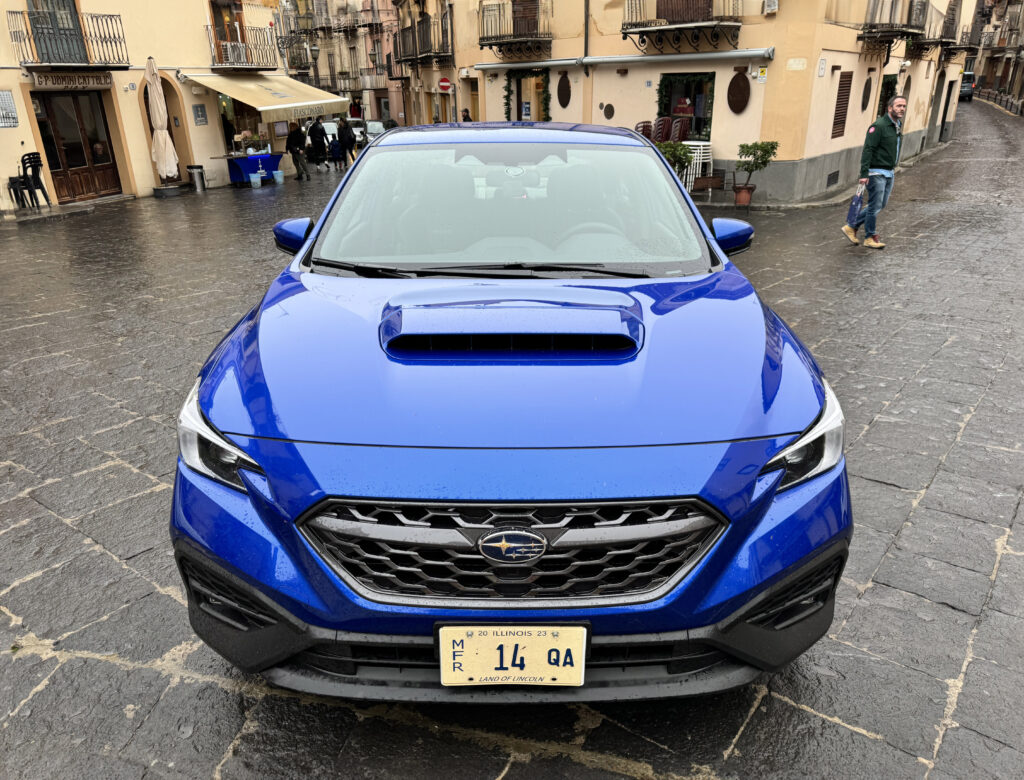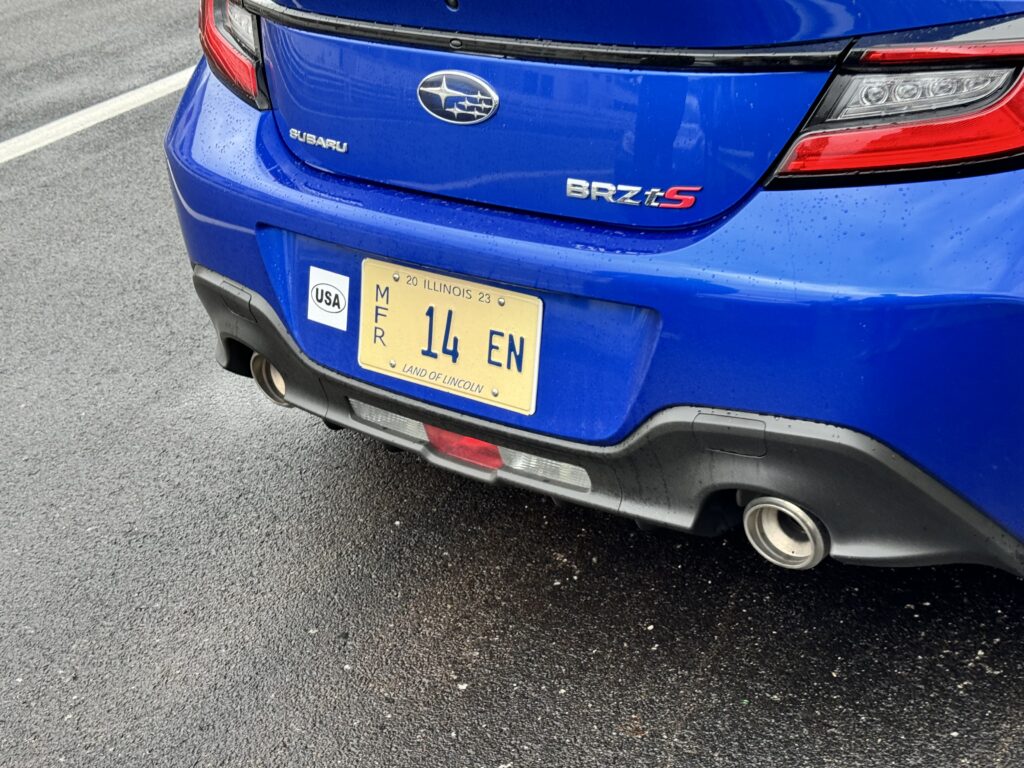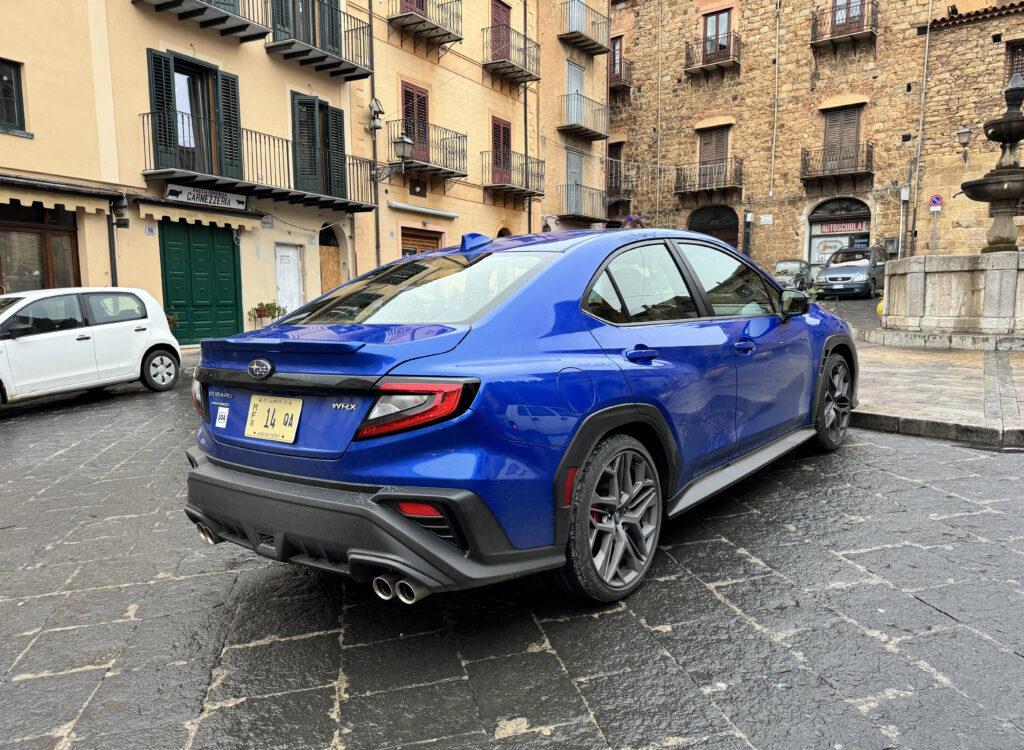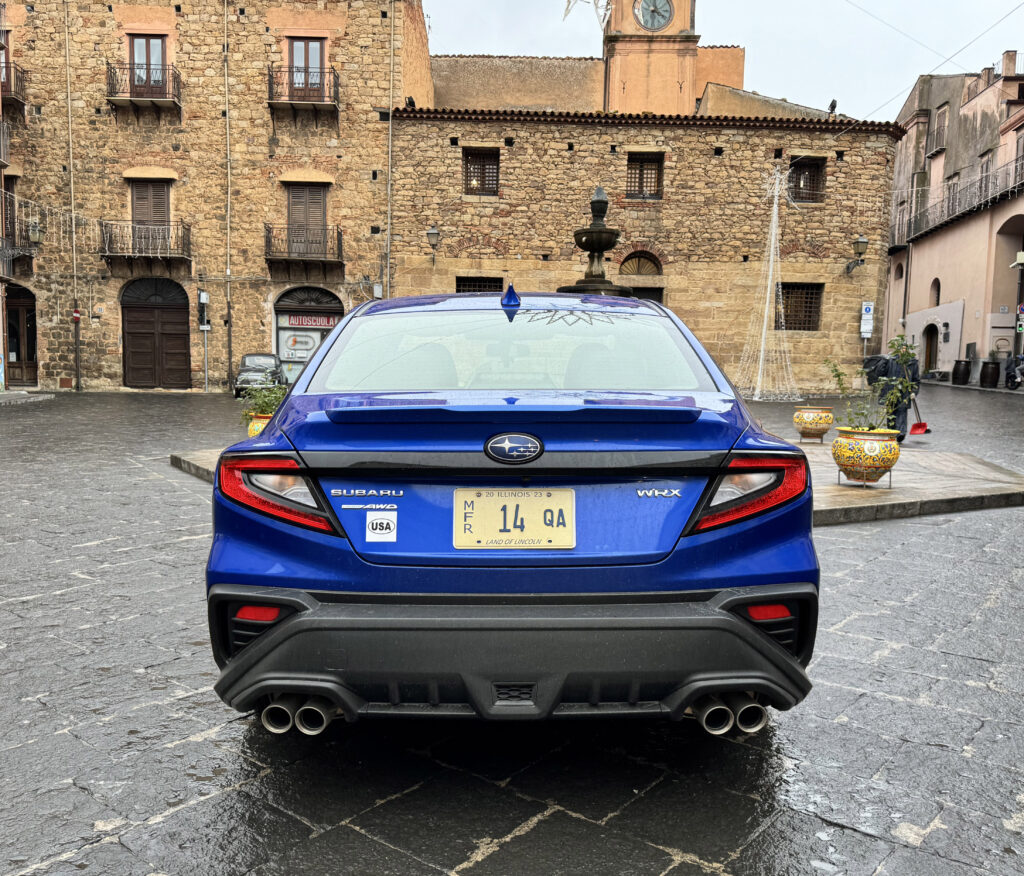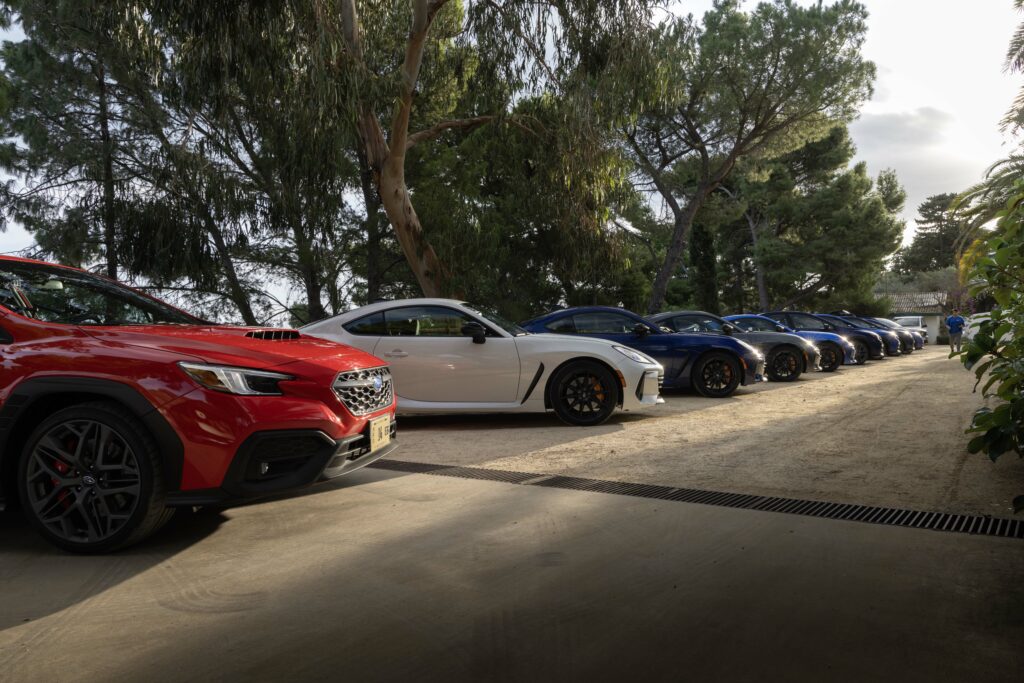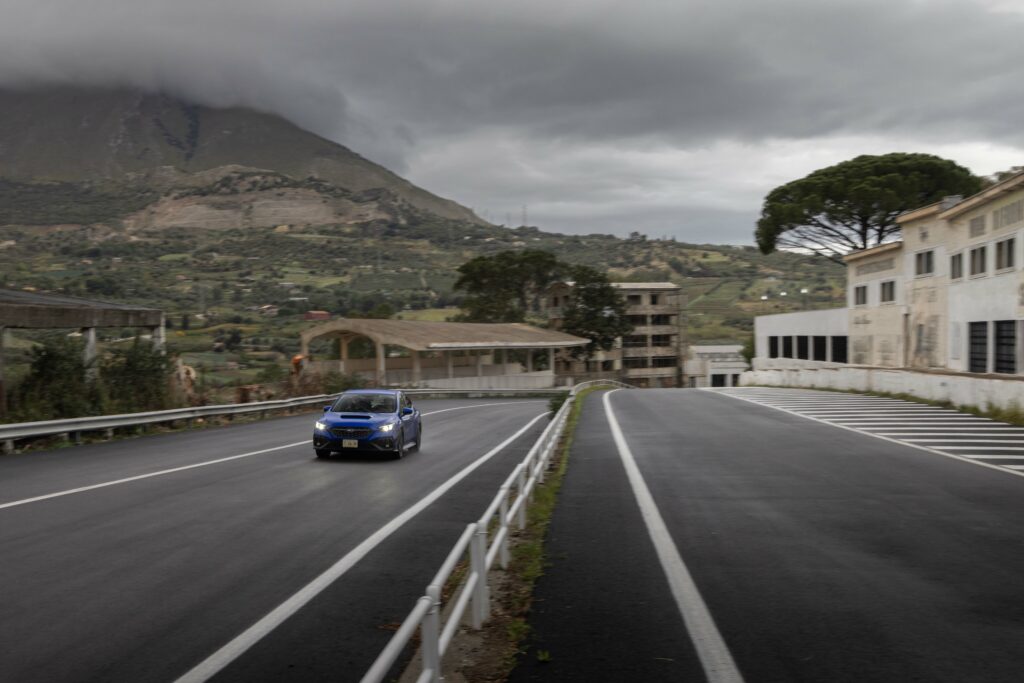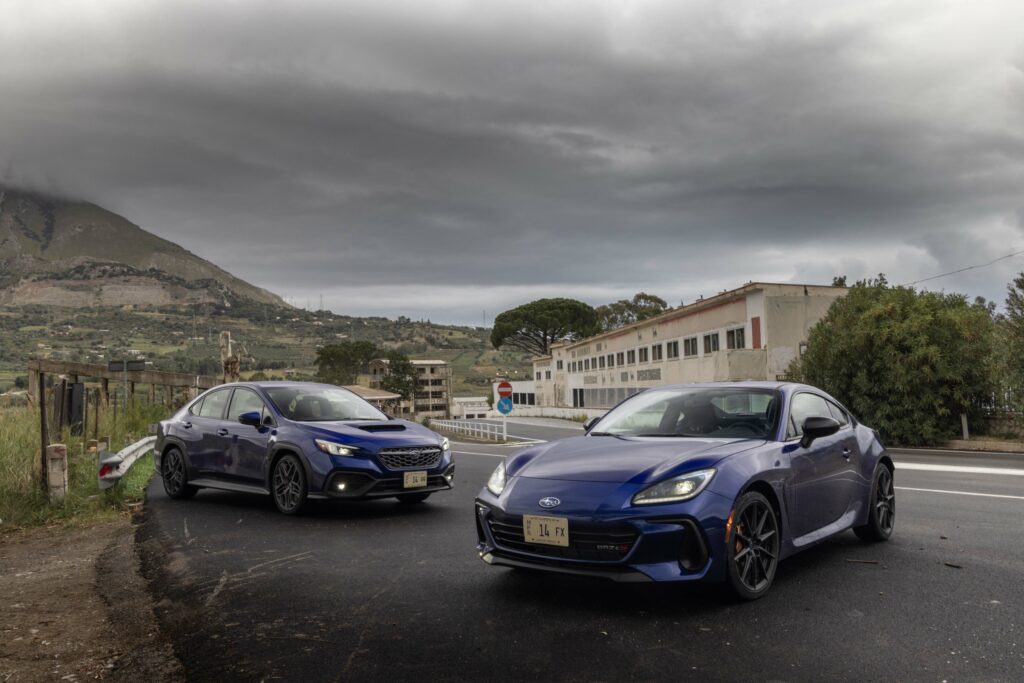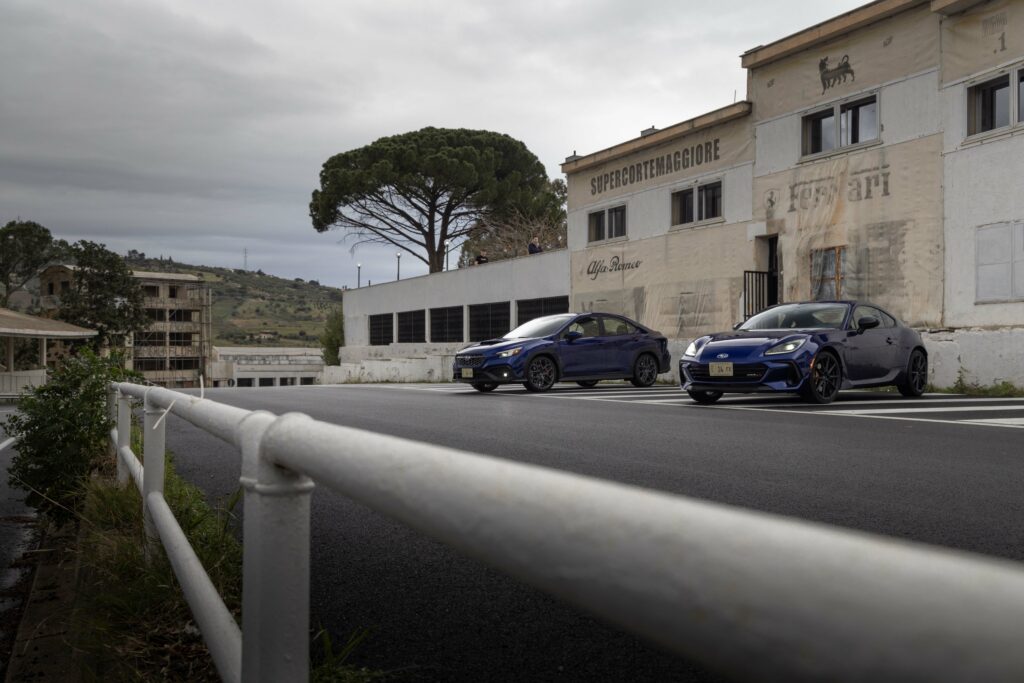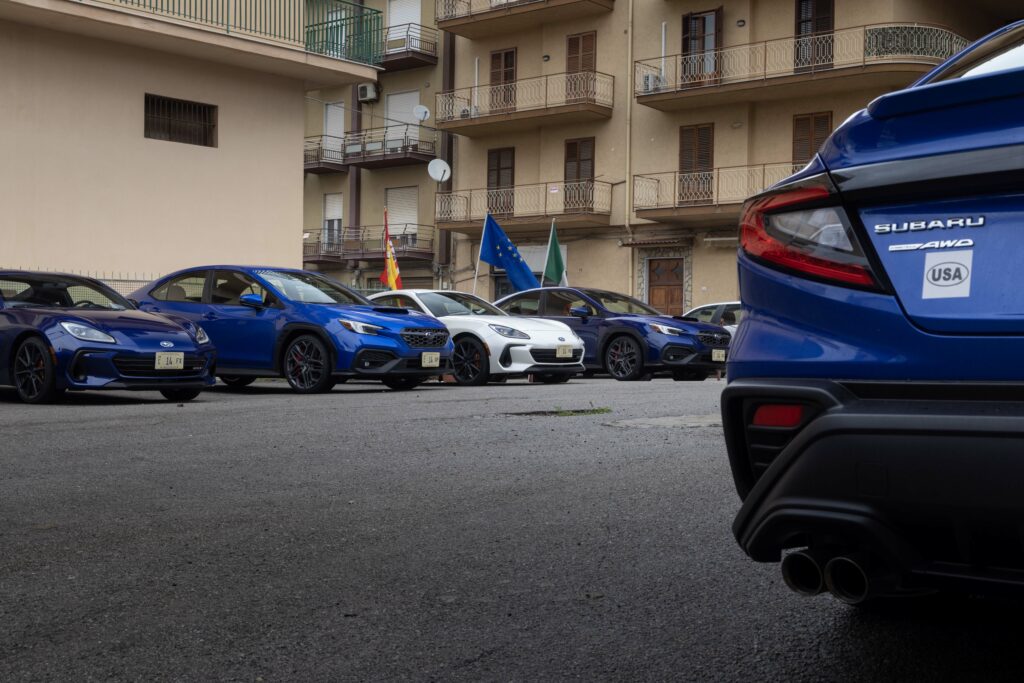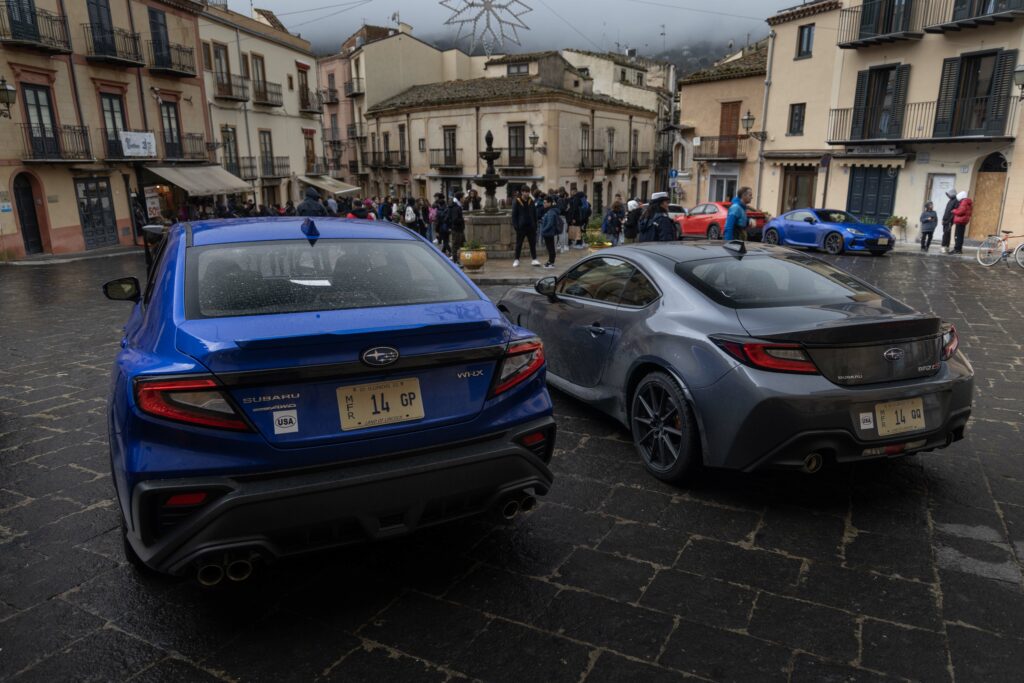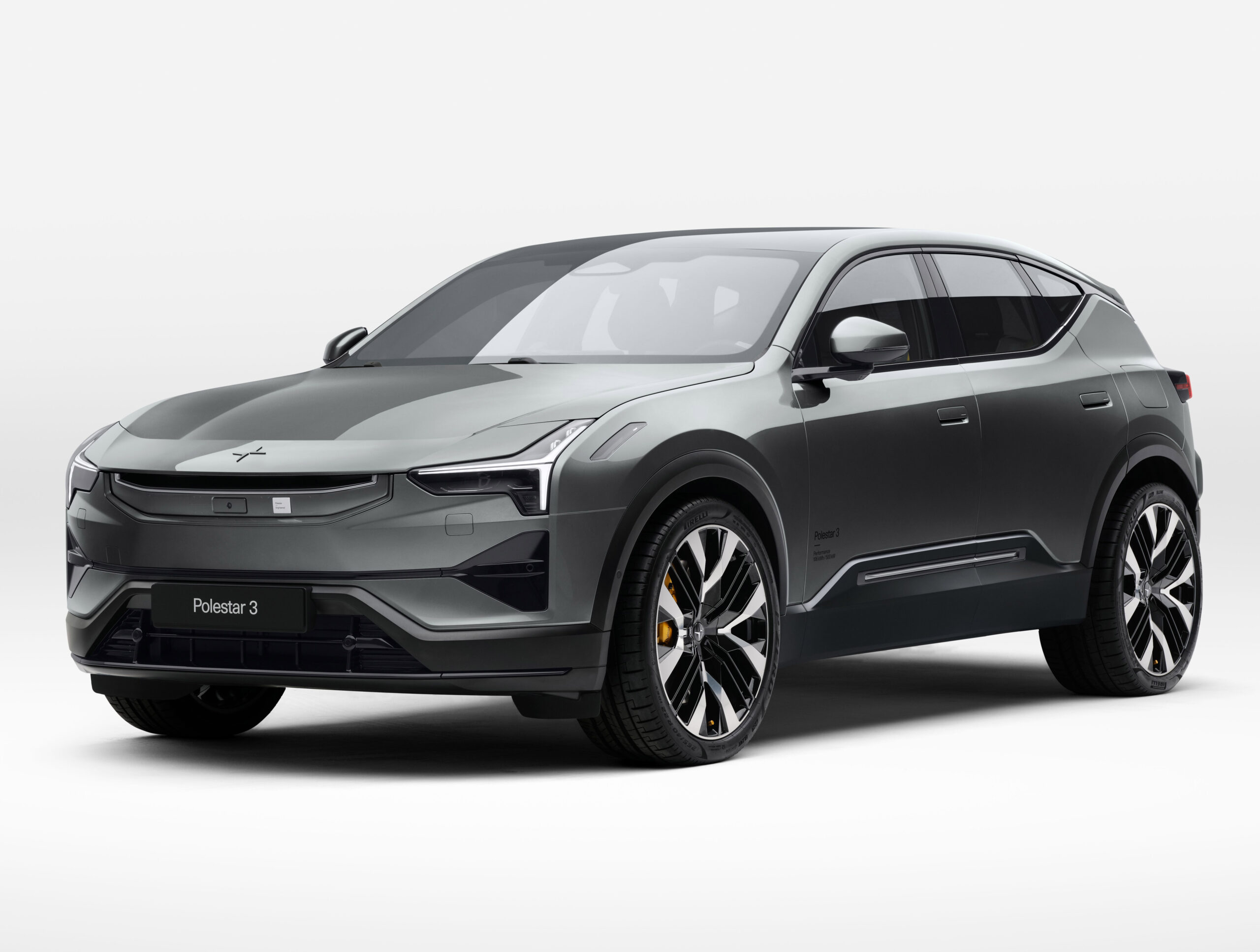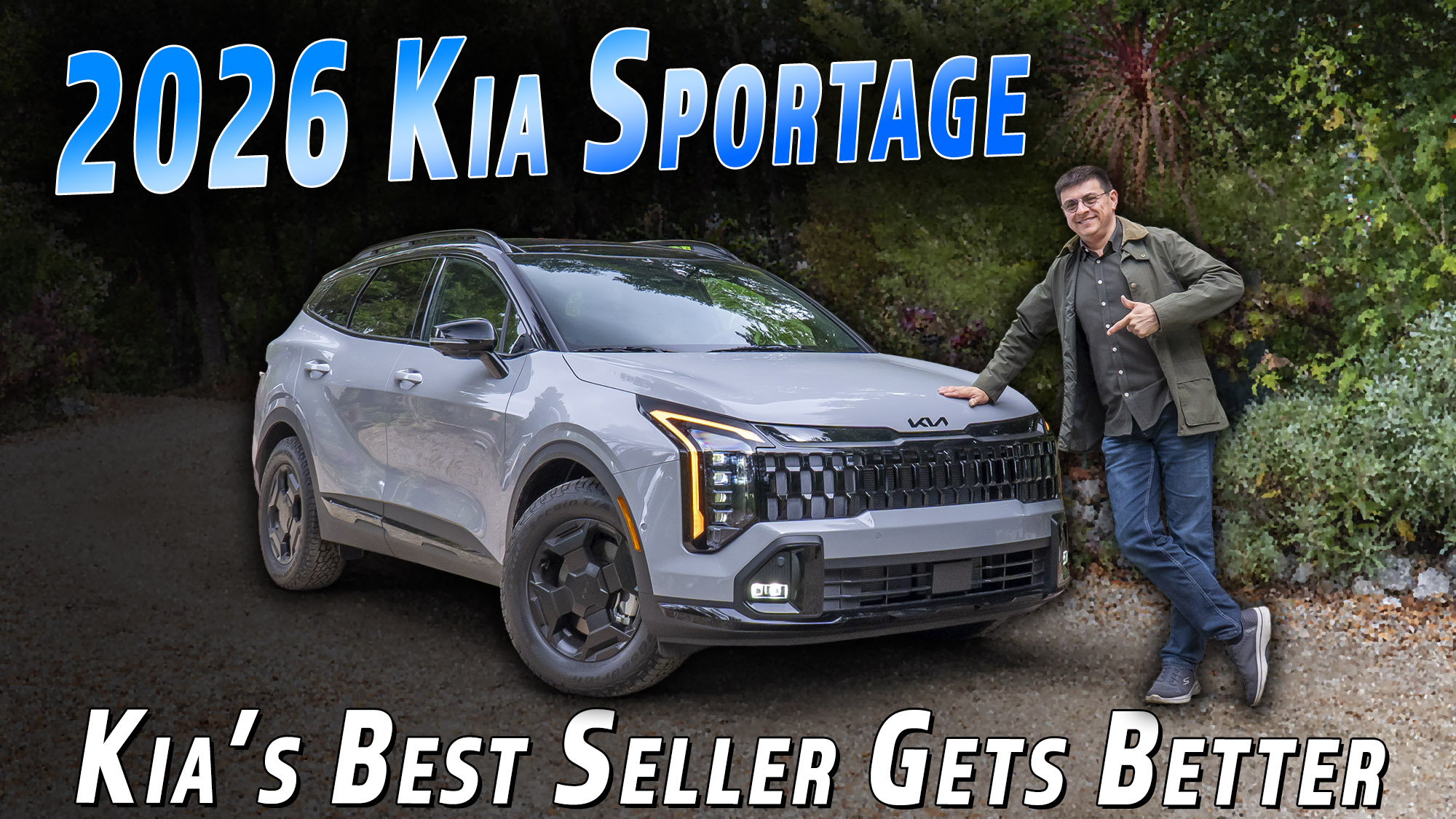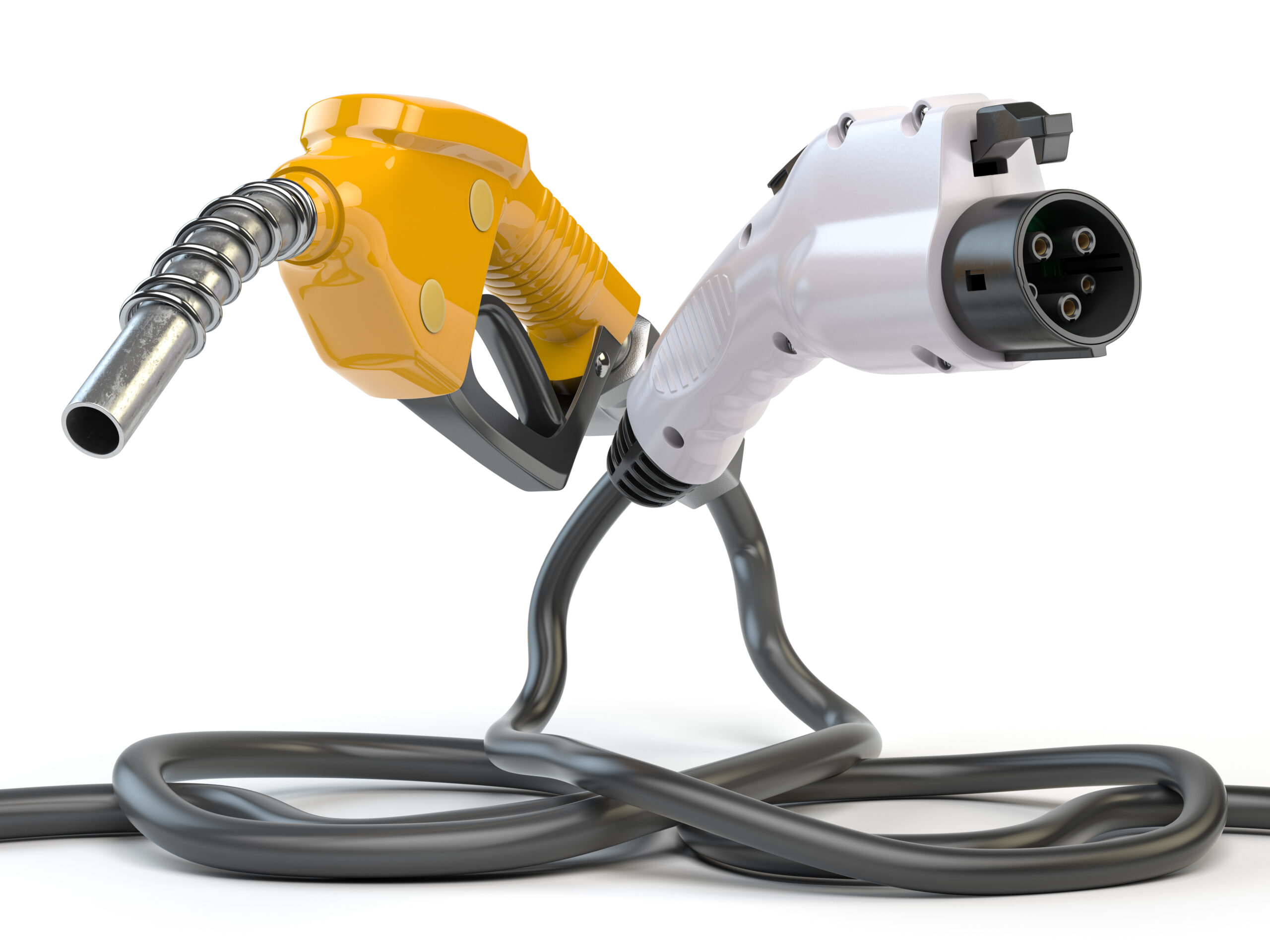
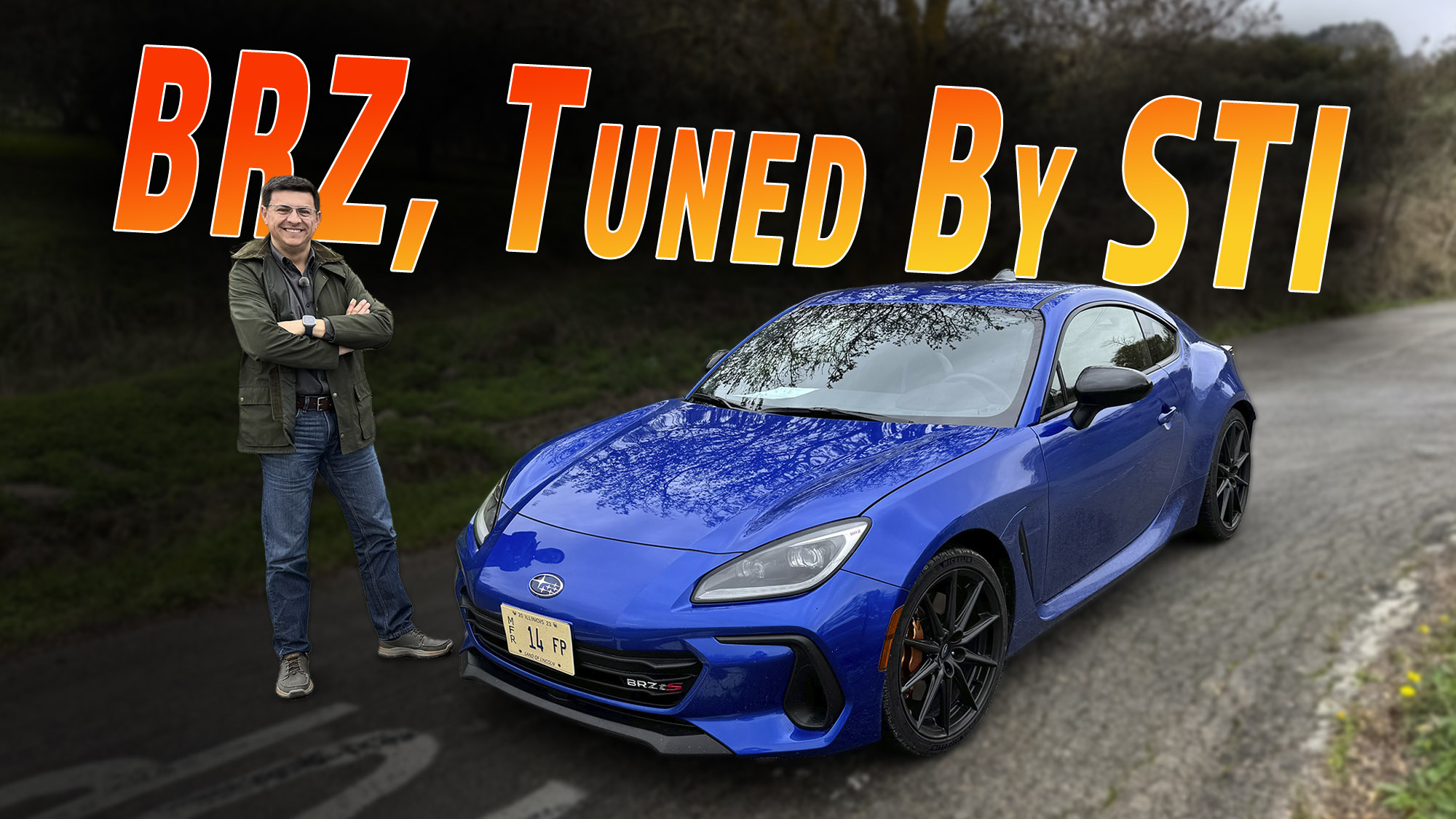
At first glance, Sicily’s Targa Florio doesn’t seem like the most natural place to launch a new performance trim of WRX or BRZ. After all, the WRX isn’t even sold in the European Union and increasing pedestrian safety regulations will likely spell the end of the BRZ next year. On the other hand, Sicily’s storied rally series has a Subaru pedigree with the Impreza scoring wins in 1995 and 1999. But let’s start every every good story needs to start: at the beginning.
Tuner Ready Becomes Track Ready
Back in 2006, Subaru launched the first WRX TR. This trim was designed for the buyer that either wanted a stealthier look, or planned to make significant mods themselves so they wanted more of a “clean slate.” At the time that meant no wing, base seats, base radio, etc. In other words: it was the WRX “basic bitch” as the Millennials say. This time around the enthusiast shopper is asking for something different. Probably because Millennials are buying WRXs. Seriously, the BRZ and WRX have two of the lowest average age buyers in America. Rather than looking for a clean slate to mod, today’s WRX buyer wants something ready for weekend tracking straight from the factory. How about a Gen X perspective? Honestly I’ve never cared for the “modded look” so this TR is right up my alley as well

All 2024 model year WRXs now get the larger 11.6-inch touchscreen infotainment system, a change from 2023 when base models received a two-screen system that occupied the same dashboard real estate. The TR’s interior is largely borrowed from the top end GT trim including the Recaco seats (powered for the driver) and the contrasting stitching. Since this is a “track” trim Subaru kindly deleted the moonroof so you can actually sit inside with a helmet on.
The regular WRX isn’t exactly under-braked, but after a day on the track in Thermal, California when Subaru launched this generation WRX, we did have to let the cars cool off between hard laps. With the TR, downtime should be significantly reduced thanks to bigger cross-drilled rotors front and rear. Stopping distances are likely also shortened thanks to the bigger pads, 6-piston Brembos up front (2-piston in the rear) and Bridgestone Potenza S007 summer tires. Completing the look we get new 19-inch wheels which I happen to think are the best looking in the Subaru lineup at the moment.
Likely to keep costs in check (after all the TR is not the most expensive WRX) Subaru opted not to fit the TR with the adaptive dampers from the GT. Instead, the TR gats firmer springs than the rest of the lineup and new dampers front and rear to improve body control and steering.
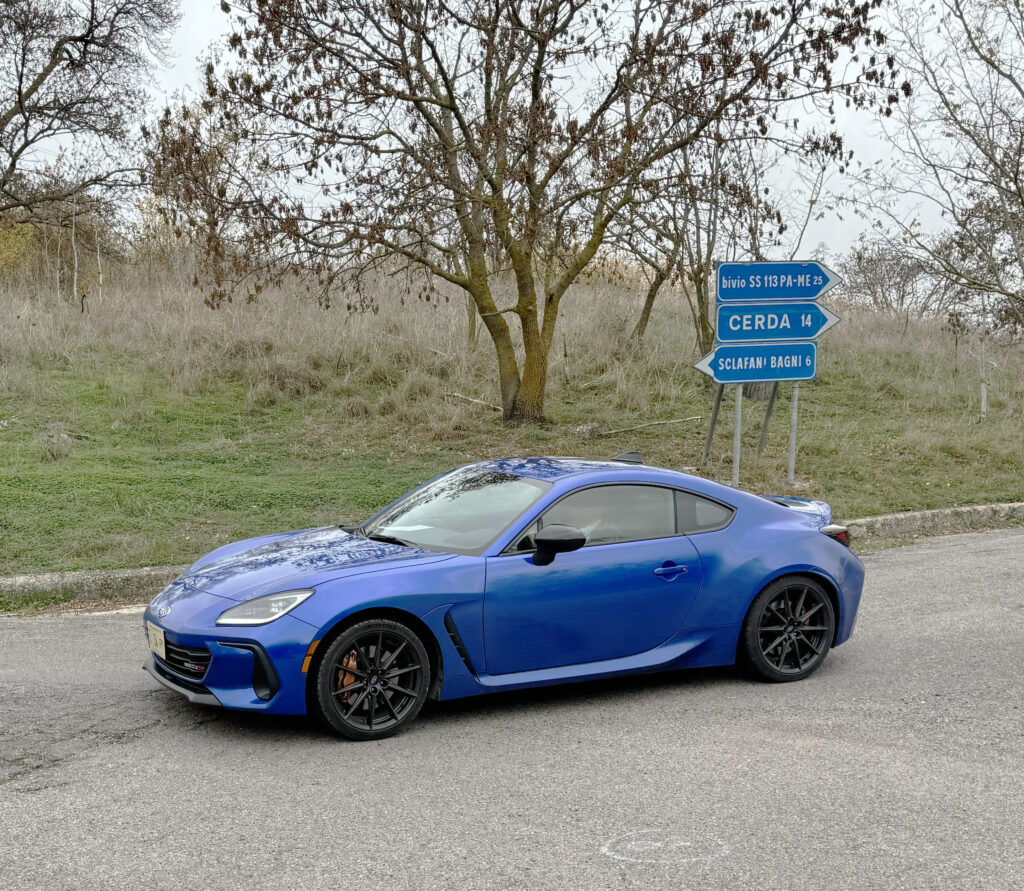
Tuned By STI Explains The Small t on the BRZ
The WRX may now be “track ready,” but the BRZ started out more track focused 2-door to begin with. So for 2024, the changes are a bit more modest. Perhaps that’s why we have a lower case “t?” Subaru explains this by saying the tS stands for “tuned by STI” although the changes are similar to the TR.
For $36,465 after destination, the tS gets upgraded brake rotors (1.2-inches larger rotors in the front and 1-inch larger in the rear), 4-piston Brembo calipers in the front and 2-piston in the rear, and revised suspension components. Hitachi provides the new front dampers which use a dual-valve design similar to Honda’s FSD damper tech. The new valving allows the suspension to respond differently to larger inputs like a big pothole or speed bump vs minor imperfections like pebbles or expansion joints.
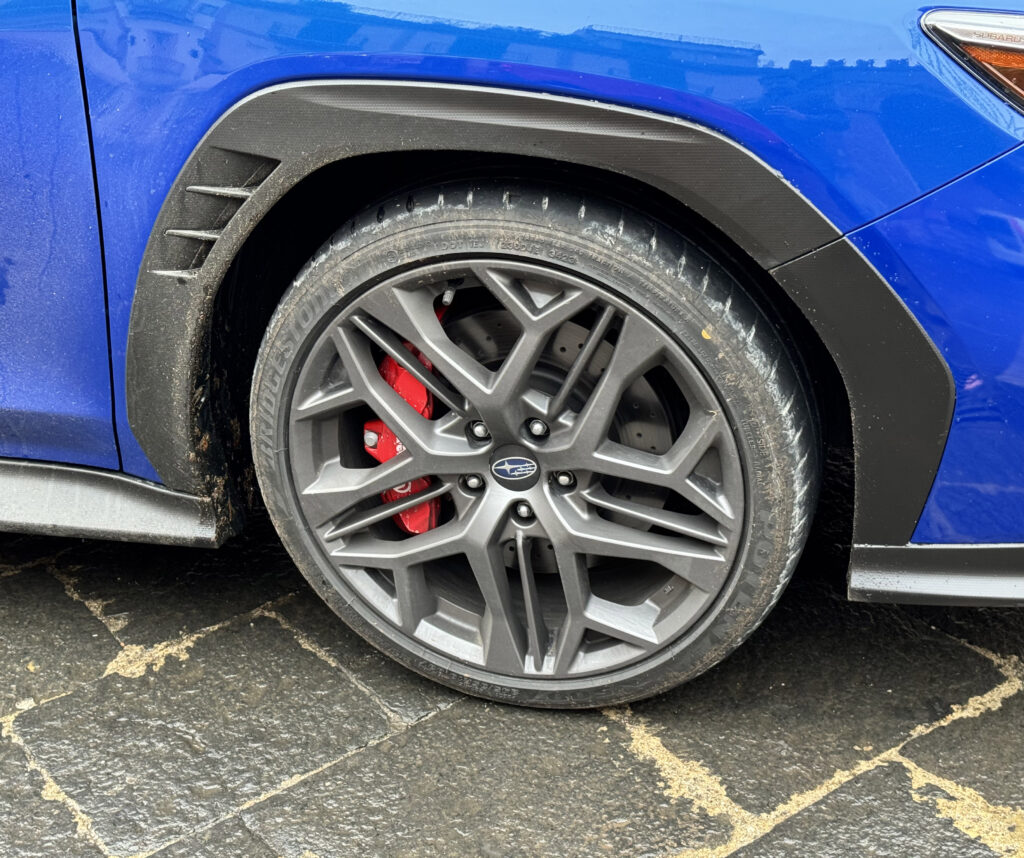
Same Boxers, More AEB
Thew WRX arguably gets the more major changes. All 2024 model year WRXs now get the larger 11.6-inch touchscreen infotainment system, a change from 2023 when base models received a two-screen system that occupied the same dashboard real estate. The TR’s interior is largely borrowed from the top end GT trim including the Recaco seats (powered for the driver) and the contrasting stitching. Since this is a “track” trim Subaru kindly deleted the moonroof so you can actually sit inside with a helmet on.
Aside from the interior and trim tweaks the big difference is in the braking. The regular WRX isn’t exactly underbraked, but after a day on the track in Thermal, California we did have to let a few WRXs cool off the last time I drove them. Downtime should be significantly reduced thanks to bigger cross-drilled rotors front and rear and stopping distances are likely shortened thanks to the bigger pads and 6-piston Brembos up front.
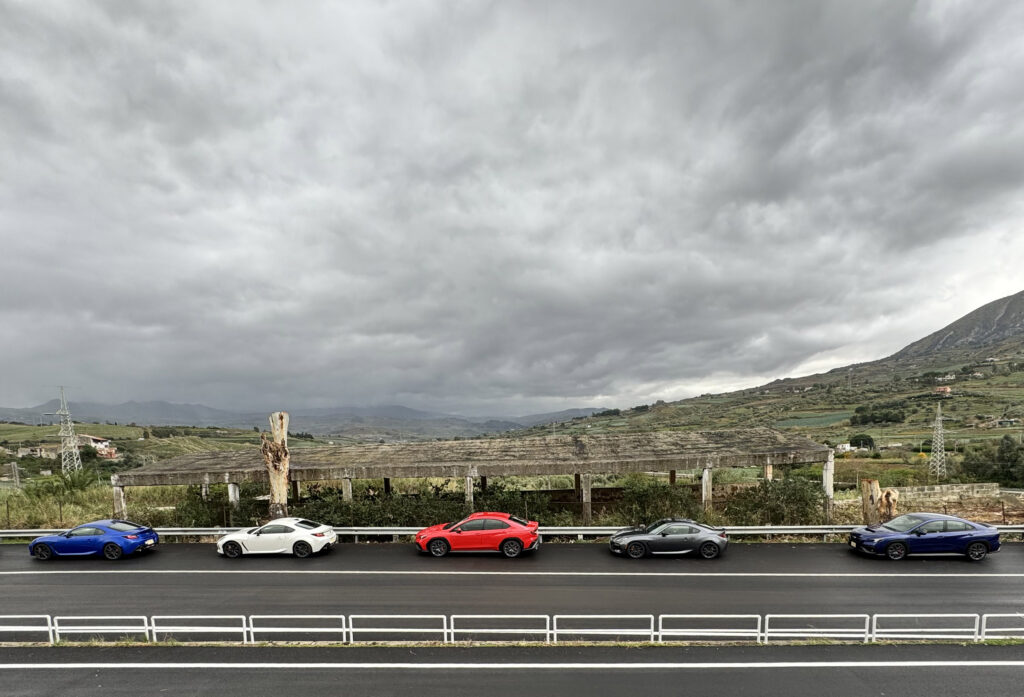
Targa Florio
The famed Sicily circuit seemed an unlikely choice to launch the sportiest versions of the WRX and BRZ at first, mainly due to the poorly paved nature of the circuit itself. This isn’t an immaculately paved alpine route after all, but after a day behind the wheel I started to get it. You see, even in tS and TR trim, the BRZ and WRX are daily drivers as well as weekend warriors.
With the youngest demographic in the biz, it’s likely that WRX and BRZ shoppers aren’t buying a car just for weekends at the autocross or a once a year track session at Road America. Sporty Susie buyers are commuting in them in Seattle, or Houston, or Boston, places with less than perfect pavement. That doesn’t mean either model rides like a 1970s Caddy, but it does mean that the ride isn’t as bone crushing as your dad’s modded 90s Lancer Evo.
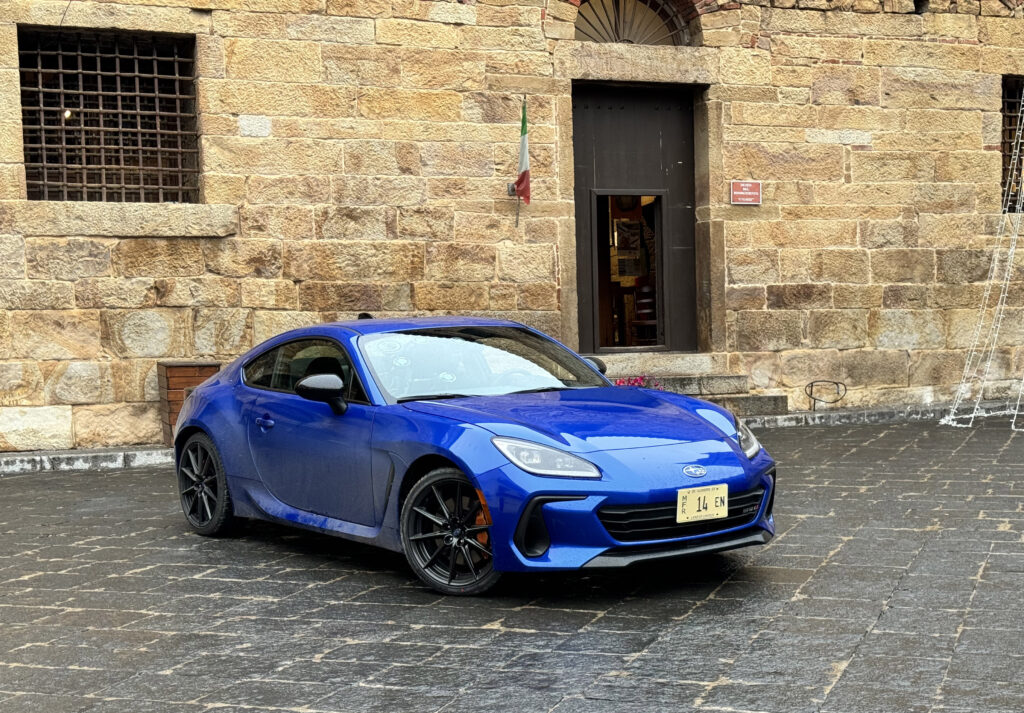
Without back to back comparisons with the existing WRX and BRZ it’s difficult to get into how different the tS and TR really feel, but logically we’re talking nudging the needle, not a complete character change, and that’s OK.
Starting with the BRZ, it’s always been playful and tail happy, the tS trim does nothing to change that despite the Michelin Pilot Sport 4 tires. Why? Because they are still 215/40R18s and Subaru still drives the rear tires via a Torsen limited slip differential. Also, it weighs only 2,846 lbs. The combination of light weight and fairly narrow tires defines the BRZ’s road manners. Grip levels are impressive, but punching the go-pedal still gets the rear end to come around. Donuts with just 184 lb-ft of torque? No problem. Will it handle like a 911? No, but it’s also six figures less expensive.
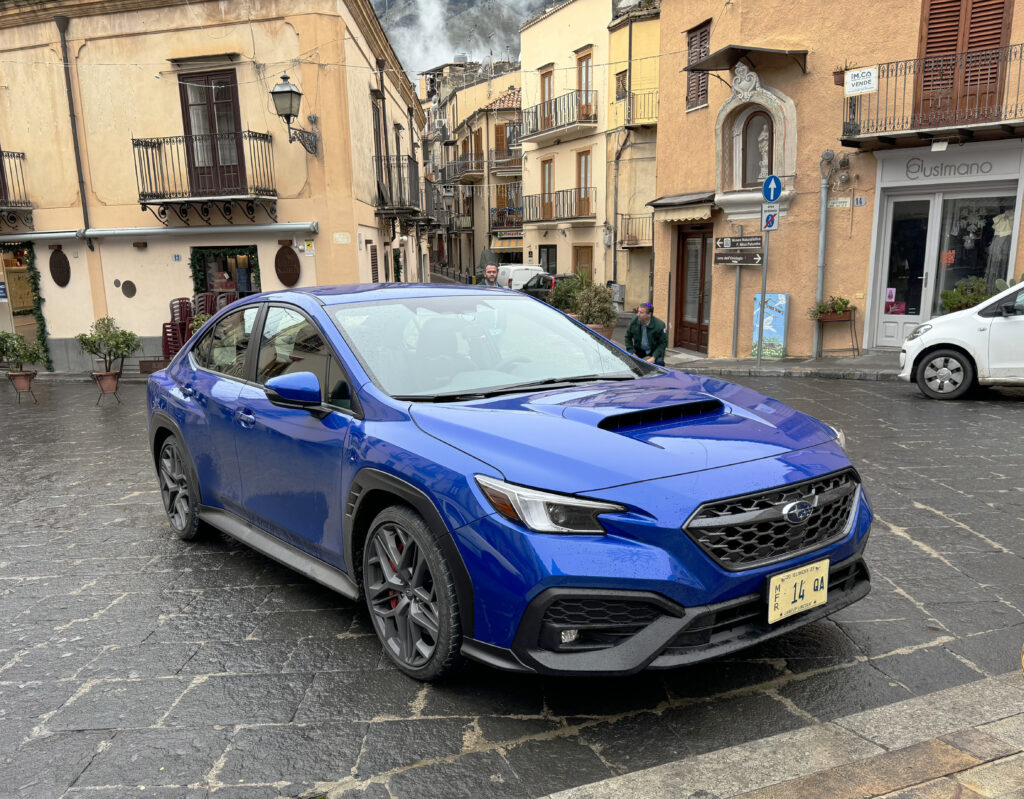
The WRX on the other hand has long been heavier, quite a bit heavier thanks to the turbo, AWD, and extra set of doors. The TR tips the scales at 3,430 pounds, about 250 more than a Civic Type R, but the weight wouldn’t be an issue if the 2.4L boxer made more shove. The Type R’s 2.0L turbo puts out 44 more horsepower and 52 lb-ft more torque. Also more powerful? An AWD GR Corolla.
With more competition than the BRZ has, there verdict on the WRX’s driving dynamics is more nuanced. The manual transmission means that the WRX TR gets a viscous coupling in the center and a 50/50 torque split F/R. In general terms that means power-on dynamics are decidedly neutral with a tendency towards understeer. Dive deeper into the throttle and there’s no rear end rotation happening, like you can get in a GR Corolla thanks to the driver being able to dial up a 70% rear power bias. The Civic? Well, let’s just say 315 ponies on the front axle wouldn’t be my first choice in the rain. And boy was it raining in Italy the day we were driving.

Bottom Line
The WRX and BRZ are more grown up than ever, TR and tS included and I’m more than OK with that. Why? Because apparently I’m within the average age bracket of a WRX and BRZ buyer and I’m more grown up than I’ve ever been before as well. I like a little fun, but I also like the security of AWD and all the active safety nannies. I like a comfy seat and a place to put my latte and for the right car I’d daily drive a 6-speed again. Is that right car a BRZ or WRX? Almost. As much as I believe in Subaru’s engineering philosophy, if it were up to me both cars would get 50 more horsepower, a healthy dose more torque, and yes the BRZ would get a turbo. But that’s just me.
—
